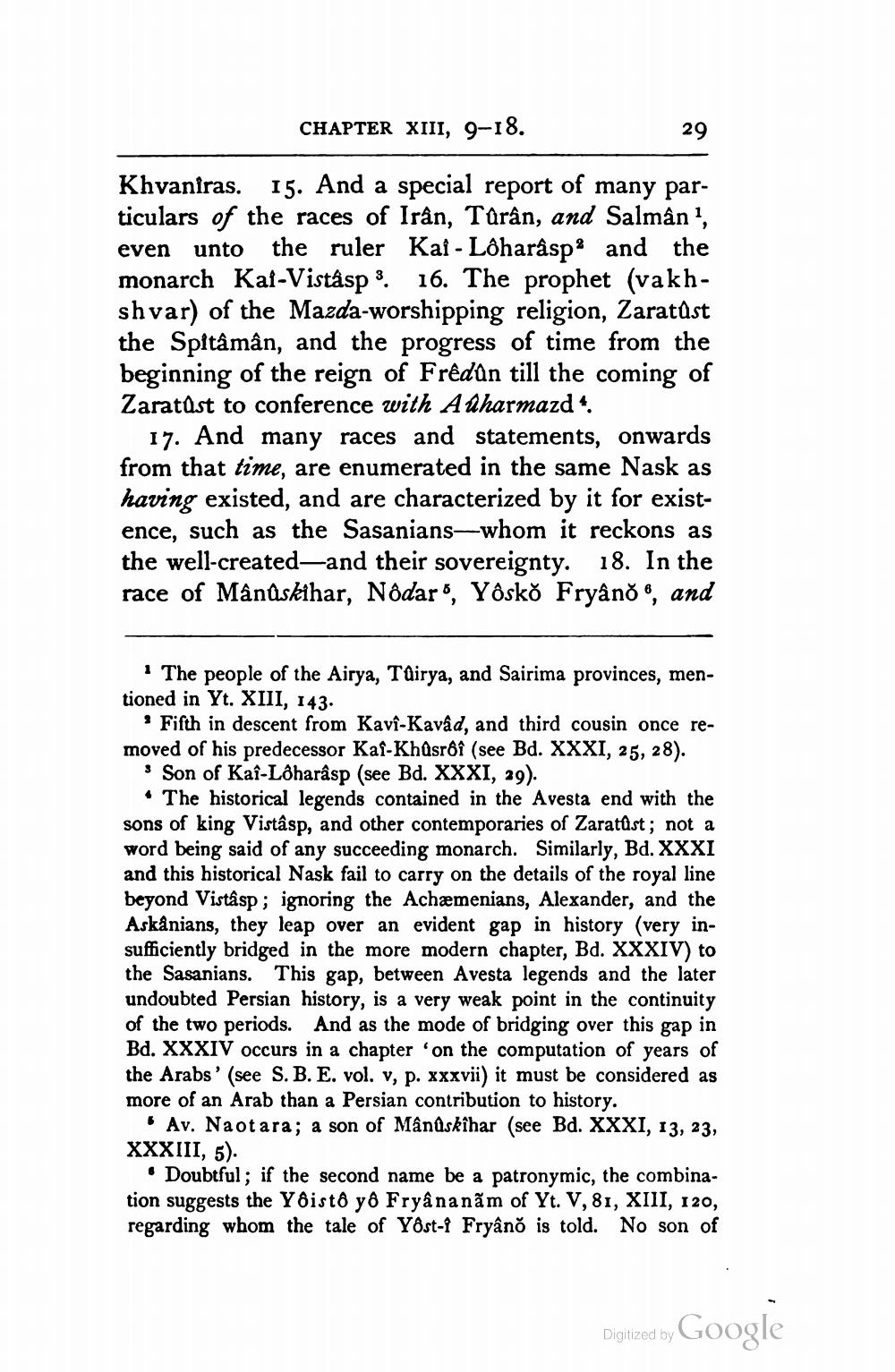________________
CHAPTER XIII, 9-18.
29
Khvaniras. 15. And a special report of many particulars of the races of Iran, Türân, and Salmân", even unto the ruler Kai - Lôharasp and the monarch Kai-Viståsps 16. The prophet (vakhshvar) of the Mazda-worshipping religion, Zaratust the Spitâmân, and the progress of time from the beginning of the reign of Frêdùn till the coming of Zaratūst to conference with Adharmazd 4.
17. And many races and statements, onwards from that time, are enumerated in the same Nask as having existed, and are characterized by it for existence, such as the Sasanians—whom it reckons as the well-created and their sovereignty. 18. In the race of Mânùskihar, Nôdar", Yôsko Fryâno e, and
· The people of the Airya, Túirya, and Sairima provinces, mentioned in Yt. XIII, 143
Fifth in descent from Kavi-Kavad, and third cousin once removed of his predecessor Kai-Khusrði (see Bd. XXXI, 25, 28).
Son of Kaî-Lôharâsp (see Bd. XXXI, 29). • The historical legends contained in the Avesta end with the sons of king Vistâsp, and other contemporaries of Zaratûst; not a word being said of any succeeding monarch. Similarly, Bd. XXXI and this historical Nask fail to carry on the details of the royal line beyond Vistâsp; ignoring the Achæmenians, Alexander, and the Askånians, they leap over an evident gap in history (very insufficiently bridged in the more modern chapter, Bd. XXXIV) to the Sasanians. This gap, between Avesta legends and the later undoubted Persian history, is a very weak point in the continuity of the two periods. And as the mode of bridging over this gap in Bd. XXXIV occurs in a chapter 'on the computation of years of the Arabs' (see S. B. E. vol. v, p. xxxvii) it must be considered as more of an Arab than a Persian contribution to history.
Av. Naotara; a son of Mânûskîhar (see Bd. XXXI, 13, 23, XXXIII, 5).
• Doubtful; if the second name be a patronymic, the combination suggests the Yöisto yo Fryâna nãm of Yt. V, 81, XIII, 120, regarding whom the tale of Yöst- Fryano is told. No son of
Digitized by Google




